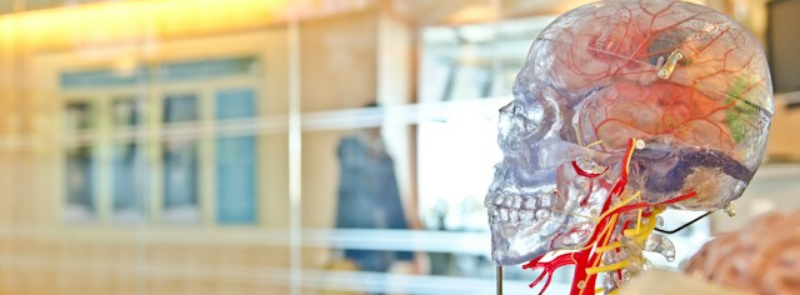
When It Occurs
Every September 25th
Official Website
Timeline
Days Passed (396)
# Hashtags
#InternationalAtaxiaAwarenessDay #AtaxiaAwareness
Every September 25th, we mark International Ataxia Awareness Day, a time dedicated to raising awareness about a group of disorders known as ataxia. Individuals with ataxia may experience challenges with balance, walking, speech, and swallowing, affecting various aspects of their daily lives. As a rare disorder, it's crucial for communities to come together to discuss the profound impact it can have on both mental and physical well-being.
History and Background
- Initiative: International Ataxia Awareness Day was initiated by the National Ataxia Foundation (NAF) in the United States and has gained global recognition.
- First Observance: The first IAAD was held in 2011 to bring attention to the challenges faced by individuals living with ataxia and to advocate for greater support and understanding.
What is Ataxia?
- Definition: Ataxia refers to a group of neurological disorders that affect coordination, balance, and speech due to damage to the cerebellum or its connections.
- Types: There are different types of ataxia, including hereditary ataxias (such as Friedreich's ataxia), acquired ataxias (resulting from conditions like stroke or multiple sclerosis), and idiopathic ataxias (of unknown cause).
- Symptoms: Common symptoms include unsteady gait, difficulty with fine motor tasks, slurred speech, involuntary eye movements, and swallowing problems.
- Impact: Ataxia can significantly impact daily life, affecting mobility, independence, and overall quality of life.
Objectives and Significance
- Raising Awareness: To increase public awareness and understanding of ataxia and its impact on individuals and families.
- Supporting Patients: Providing support and resources for individuals affected by ataxia, as well as their caregivers and families.
- Advocating for Research: Promoting research into the causes, treatments, and potential cures for ataxia disorders.
- Building Community: Bringing together the global ataxia community to share experiences, information, and resources.
Activities and Campaigns
- Educational Campaigns: Online and community-based campaigns to educate the public about ataxia symptoms, diagnosis, and management.
- Fundraising Events: Charity walks, runs, and other fundraising events to support ataxia research and patient support programs.
- Public Advocacy: Advocacy efforts to promote policies that support research funding, healthcare access, and disability rights for individuals with ataxia.
- Social Media Awareness: Using social media platforms to share personal stories, facts about ataxia, and resources for affected individuals and their families.
How to Participate
- Learn and Share: Educate yourself and others about ataxia by sharing information and resources on social media or organizing educational events.
- Support Fundraising: Participate in or organize fundraising events to support ataxia research and patient support programs.
- Join Support Groups: Connect with local or online support groups for individuals affected by ataxia and their caregivers.
- Advocate: Advocate for policies that support research funding, healthcare access, and disability rights for individuals with ataxia.
Global Participation
- International Support: IAAD is recognized globally, with organizations and individuals worldwide participating in awareness and advocacy efforts.
- Collaboration: Collaboration between patient advocacy groups, healthcare professionals, researchers, and policymakers to address the challenges faced by the ataxia community.
- Community Engagement: Ataxia organizations and support groups around the world host events and activities to raise awareness and support for ataxia patients.
Resources and Support
- Patient Organizations: Organizations such as the National Ataxia Foundation (NAF), Ataxia UK, and the European Federation of Neurological Associations (EFNA) provide support, resources, and information for individuals affected by ataxia and their families.
- Research Initiatives: Funding and research initiatives aimed at understanding the causes of ataxia, developing treatments, and improving quality of life for patients.
- Educational Materials: Brochures, videos, and online resources for healthcare professionals, patients, and the public about ataxia disorders and their impact.
Notable Observations and Examples
- Global Awareness: IAAD events and activities are held in various countries, including educational seminars, awareness walks, and media campaigns.
- Personal Stories: Sharing personal stories and experiences of living with ataxia to raise awareness and provide support to others in the community.
- Scientific Advances: Highlighting advancements in ataxia research and clinical trials aimed at developing potential treatments and therapies.
Key Messages
- Empathy and Support: Showing empathy and support for individuals and families affected by ataxia.
- Education and Awareness: Increasing awareness and understanding of ataxia among the general public and healthcare professionals.
- Research and Innovation: Supporting research efforts to improve diagnosis, treatment options, and quality of life for individuals living with ataxia.
International Ataxia Awareness Day plays a crucial role in fostering understanding, support, and advocacy for individuals affected by ataxia worldwide. By raising awareness and supporting research efforts, the global community can work towards improving outcomes and quality of life for those living with ataxia disorders.


